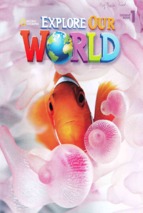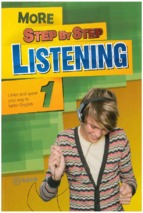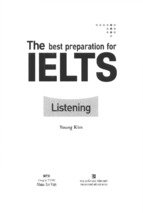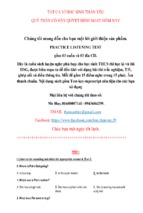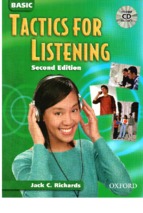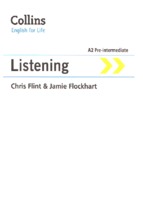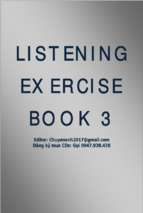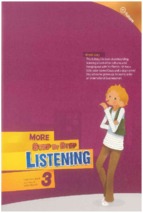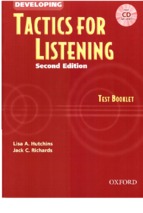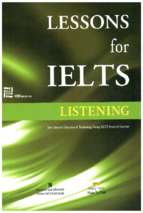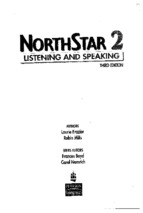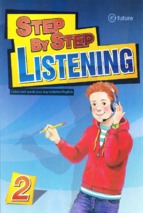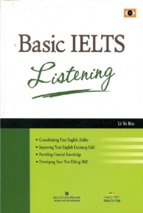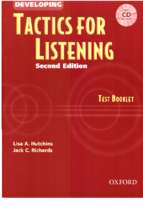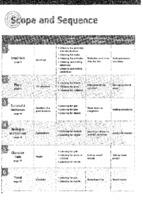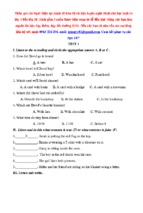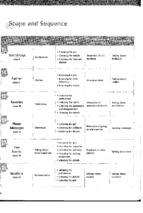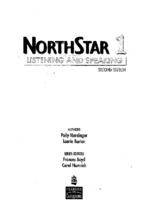bài tập tiếng anh chuyên ngành
HỌC VIỆN CÔNG NGHỆ BƯU CHÍNH VIỄN THÔNG
BÀI TẬP
TIẾNG ANH
CHUYÊN NGÀNH CNTT
(Dùng cho sinh viên hệ đào tạo đại học từ xa)
Lưu hành nội bộ
HÀ NỘI - 2006
HỌC VIỆN CÔNG NGHỆ BƯU CHÍNH VIỄN THÔNG
BÀI TẬP
TIẾNG ANH CHUYÊN NGÀNH CNTT
Biên soạn :
THS. LÊ THỊ HỒNG HẠNH
CN. NGUYỄN THỊ HUỆ
Câu hỏi
CÂU HỎI
Câu 1: Hãy đọc kỹ đoạn văn sau và trả lời câu hỏi
Throughout the ages people have sought to understand the world around them and to
explain it in a systematic way. A system is simply a group of elements which work together to
achieve a purpose. Systems can be very large, such as the system of courts and laws we call our
'legal system', or very small, such as the system involved in cleaning your teeth. Systems can
occur in nature or be designed by people. The water cycle (described below) is an example of a
natural system. Banking systems and computer systems are examples of systems designed by
people.
Input-process-output
Processing systems accomplish a task: they take one or more inputs and carry out a process
to produce one or more outputs. An input is something put into the system, a process is a series of'
actions or changes carried out by the system, while an output is something taken from the system.
All systems can be represented by the following input-process-output (IPO) diagram.
The shaded area in the diagram represents the system. The letter 'I' stands for input and the
letter '0' stands for output. The input into this system is an output from another system and the
output from this system is an input into another system.
To develop these ideas further we will consider three systems: coffee making the water
cycle and the shop.
THE WATER CYCLE
Water circulates between the earth and the atmosphere; this is an example of a system
occurring in nature. It is driven by. the heat of the sun which causes evaporation from bodies of
water and transpiration from plants. The water vapour in the atmosphere forms clouds under
certain conditions. When these clouds have more water vapour than they can hold, precipitation
occurs and the water is returned back to the earth as rain;' hail, dew or snow. This process of
moving water from the earth into the atmosphere and back to the earth is called the water cycle.
The inputs are the heat from the sun, and water from oceans, lakes, rivers and plants. The
process consists of actions such as evaporation, transpiration and precipitation. The output is the
circulation of the water between the earth and its atmosphere.
THE SHOP
A shop is a retail system designed by people; its purpose is to allow customers to purchase
goods or items. The inputs are the goods to be sold. The process consists of actions such as
3
Câu hỏi
receiving goods from the warehouse, packing the goods into the shop and selling the goods at the
counter. The output is the goods sold to the customers.
1. Write down whether the following statements are true or false.
a. A system is a group of elements which work together to achieve a purpose.
b. An input is something taken from the system.
c. Systems have only recently been studied.
d. A process involves any actions or changes carried out by the system.
e. A shop is an example of a. system designed by people.
f. Systems cannot be represented by diagrams.
g. An output is something taken from the system.
h. All systems contain an input, a process and an output.
i. Coffee making cannot be considered as a system.
j. The water cycle is an example of a system occurring in nature.
2. Making a piece of buttered toast is a simple system.
a What are its input, process and output?
b Draw an IPO diagram to represent this system.
4
Câu hỏi
3. Planting a tree bought from the nursery can be considered a system.
a What are its input, process and output?
b Draw an IPO diagram to represent this system.
4. A recorded music system involves using a record, cassette or compact disc to
listen to music.
a What are its input, process and output?
b Draw an IPO diagram to represent this system.
5. Every action we take can be considered as a system. Do you agree?
Câu 2: Refinement and synthesis
Refining a system means analysing it in more detail and breaking it down into smaller
components. Each part of the process may be considered either as a system in itself, or as a subsystem. A sub-system is a small system which is part of a larger system. It also contains a group of
elements which work together to achieve a purpose.
Synthesis is the reverse process; it involves combining simple sub-systems into a larger, more
complex system.
The shaded area in the above diagram represents a large system which has been broken
down into two smaller systems, or sub-systems.
THE WATER CYCLE
A refinement of the water cycle system could consider each part of the process evaporation, transpiration and precipitation - as sub-systems.
. Evaporation is a sub-system which converts water into water vapour. The inputs are the
heat of the sun and water in large' bodies such as oceans, lakes and rivers. The process involves
changing the water into vapour.The output is the water vapour.
. Transpiration is a sub-system which converts moisture in plants and other bodies into
water vapour. The inputs are the heat of the sun, and plants and other bodies. The process involves
changing the moisture from plants into vapour. The output is the water vapour.
.
. Precipitation is a sub-system which converts water vapour into water in the form of rain,
hail, dew and snow. The input is the water vapour in the form of clouds. The process involves
changing the water vapour into water. The output is rain, hail, dew and snow.
5
Câu hỏi
Refining the water cycle into these three sub-systems is only one way of understanding it.
The water cycle is a very complex system and contains many other processes which could have
been used to refine the system.
THE SHOP
A shop could be refined by considering each part of the process - receiving goods, packing
goods and selling goods - as sub-systems.
. Receiving goods is a sub-system whose purpose is to prepare goods for placement in the
shop. The input is the goods on trucks from the warehouse. The process involves off-loading the
goods from the trucks. The output is the goods in the storage area.
.
. Packing goods is a sub-system whose purpose. is to prepare goods for sale. The input is
the goods in the storage area. The process involves unpacking the goods and placing them on
shelves and display racks. The output is the goods ready for sale.
. Selling goods is a sub-system whose purpose is to exchange the goods for cash or credit.
The input is the goods ready for sale on the shelves. The process involves customers buying the
goods at the counter. The output is the goods sold.
Here the refinement of the shop has involved three sub-systems all linked together so that
the output from one sub-system is the input into another sub-system. This is just one way of
explaining the shop as a system.
6
Câu hỏi
Systems are refined they are broken down into sub-systems, giving one level. If these subsystems are broken down into smaller sub-systems, another level can be seen. For example, the
refinement of the shop contains a sub-system for selling goods at the counter. This sub-system
could be broken down into selling goods by cash and selling goods by credit. Each of these parts
is a sub-system of the subsystem, and they provide another level for viewing the system of the
shop.
1. Copy and complete the following sentences.
a A…………………..is a small system which is part of a larger system.
b Systems can be viewed at different……………
c Combining sub-systems to form a larger system is called……………….
d A……………….is a group of elements which work together to achieve a purpose.
e An………………….is something put into the system.
f Breaking down large systems into smaller sub-systems is called……………
g The…………………….is an example of a system occurring in nature.
h A shop is an example of a system designed by……………….
i An output is something taken……………….the system.
j The………………..involves the actions carried out by the system.
2. What is a sub-system?
3. Explain the difference between, refinement and synthesis.
4. 'Systems can be viewed at different levels.' Explain this statement.
5. Refine your system for planting a tree bought from the nursery into sub-systems. List
these sub-systems.
Câu 3: A system as a black box
Many people; do not understand how a system works, yet they know that if the system is
given a certain input it will produce a certain output. For example, in a recorded music system
when a CD is placed in the CD player and the play button is pressed, the music will be heard.
Most people are not concerned with how the CD player works. A system such as this can be
called a 'black box' because the internal components of the system are not fully understood by
most people. Their main concern is that the system accomplishes its task.
ENVIRONMENT
Systems work under certain physical conditions or surrounding influences which are called
their environment. For 'example:
. the environment of coffee making consists of the shop where the coffee and milk were
bought, the water board which supplies the water and the electricity commission which supplies
the electricity
. the environment of the water cycle consists of our solar system
. the environment of the shop consists of the cost of the goods from the wholesaler, the
transport system used by the trucks, or the amount of money the consumers have to spend.
7
Câu hỏi
All these factors are not controlled by the system; they are outside the system but have
some influence on it.
BOUNDARY
The limit of a system is called its boundary. It is determined by the observer who decides
which parts it takes up the system and where the boundary is drawn.
For example:
. the boundary of coffee making might consist of the walls of the kitchen where the coffee is
made
. the boundary of the water cycle might consist of the earth and its atmosphere .
. the boundary of the shop might consist of the property where the shop is situated.
1. For each of the following statements, select a matching phrase from the list below.
a. A system whose internal components are not fully understood.
b. A small system which is part of a larger system.
c. Separates the system and its environment.
d .The breakdown of a large system into smaller sub-systems.
e. The physical conditions within which the system operates.
f. Something taken from the system.
g. A group of elements which work together to achieve a purpose.
h. A series of actions or changes carried out by the system.
i. Something put into the system.
'
j .The combination of sub-systems into a larger system,
system process input sub-system
black box
refinement
output
synthesis boundary environment
2. What does the term 'black box' mean?
3. 'The boundaries of a particular system will vary.' Explain this statement.
4. Does the environment contain factors outside the system? Explain your answer.
5.Why are computer systems black boxes to most people?
6. List four systems which are black boxes to you.
Câu 4: PROCEDURES
Procedures are the set of instructions which specify what processing is to be performed, or
what course of action is to take place. For example, the procedures in making coffee consist of:
. placing a teaspoon of coffee in the cup
. pouring the hot water into the cup
. pouring the right quantity of milk into the cup
. stirring..
.
8
Câu hỏi
The procedures need to take into account the order of the processes, such as whether the
milk is poured into the cup before or after the hot water.
PROCESSOR AND RESOURCES
The processor and the resources are closely linked. The processor is whatever carries out or
executes the procedures. The person making the cup of coffee is the processor since she or he
performs all the above procedures.
The resources are used by the processor to perform the task. They include, anything which
supports or assists the execution of the procedures, but do not include the inputs. The teaspoon
used in making the cup of coffee is a resource.
1. The vowels have been omitted from these words. Write out the completed words.
a. pr _c_ss_r
f. r _s _rc_s
b. _nv_r _nm__nt
g. pr _c_d_r_s
c. sys_m
h. b_ _nd_ry
d. _np_t
i .synth_s_s
e. s_b-syst_m
j . _ _tp_t
2. Why is the system defined in terms of procedures, processor and resources?
3. What is the meaning of the following terms?
a procedures
b processor
c resources
4. Why do procedures need to take into account the order of the processes?
5 .Making a piece of buttered toast is a system. What are its procedures, processor and
resources?
6 . Planting a tree bought at the nursery is a system. What are its procedures, processor
and resources?
Câu 5: Hierarchy charts
Just as we can refine a system into sub-systems, we can also refine a process into subprocesses, -also called modules. Each of these modules contains only one process.
We can illustrate the different levels of the process using a hierarchy chart. The major module is
shown as the top level and it can be refined into lower level modules as more detail is required.
Control passes from the top level down to the next lower module or first refinement, then to the
next lower module or second refinement, and' so on. As well as containing only one process, each
module should contain a single entry and a single exit.
1 Write down whether the following statements are true or false.
a. Modules are also called sub-processes.
b. Each module in a hierarchy chart can have more than one entry and exit.
c. Hierarchy charts are never changed.
d. If more detail is required in a hierarchy chart, a further refinement is necessary.
9
Câu hỏi
e. Hierarchy charts only illustrate the structl1re of the processes.
f .The top level of the hierarchy chart contains the major module.
g. Processors are the set of instructions which specify what processing is to be performed.
h. Resources are whatever carry out or execute the procedures. i The environment is the
limit of the system.
j. A black box is a system whose internal components are not fully understood.
2 What is the purpose of a hierarchy chart?
3 Hierarchy charts use a top-down method. Explain the meaning of this.
4 What is a module in a hierarchy chart?
.
5 The first level in a hierarchy chart is called the top level. What is the next lower level
called?
6 Making a piece of buttered toast 'is a system. Draw a hierarchy chart to illustrate the
process for toasting the bread.
7 The recorded music system involves using a record, cassette or compact disc to listen to
music. Draw a hierarchy chart to illustrate the process of selecting music
Câu 6: IPO charts
An input-process-output (IPO) chart is another method of describing a system. It specifies
the inputs put into the system, the processing to be carried out by the system and the outputs taken
from the system. It consists of three columns with the headings input, process and output. IPO
charts can also be drawn for any sub-system. For example, IPO charts could be drawn for the
evaporation, transpiration and precipitation sub-systems of the water cycle. IPO charts provide a
quick and efficient way of describing a system.
1. Complete the following sentences
a. ………… charts are a way of describing a system by specifying inputs, processes and
outputs.
b. Hierarchy charts are used to show the levels of refinement of a …………..
c. Procedures are the set of…………… which specify what processing is to be performed.
d. Resources are used by the ………………………..to perform its task.
e. IPO charts can be drawn for any……………………….
f .Processes are broken down into smaller components called………………..
g. A……………….is whatever carries out or executes the procedures.
h. A hierarchy chart passes control from the…………………………..level down to the first
refinement.
i . A………………is a system whose internal components are not fully understood.
j. The………………..is the physical conditions or surrounding influences within which the
system operates.
2. Describe an IPO chart.
10
Câu hỏi
3. Why are IPO charts a good way to describe a system?
4. Making a piece of buttered toast is a system. Draw an IPO chart to describe this system.
5. Planting a tree bought at the nursery is a system. Draw an IPO chart to describe this
system.
6. The recorded music system involves using a record, cassette or compact disc to listen to
music. Draw an IPO chart to describe this system.
Câu 7: Specifying procedures
Procedures are the set of instructions which specify what processing is to be performed.
These procedures are essential if the system is going to achieve its purpose and are stated in the
form of an algorithm. An algorithm is a series of steps which, when performed correctly, will
solve a problem in a finite time. Algorithms can be used to solve all kinds of problems. Even
simple actions such as making a phone call, catching a train or running a shower can be
represented as algorithms.
The algorithm to make a phone call might be:
1. Pick up the phone receiver.
2. Dial the correct phone number
3. Deliver the message
4. Hang up the phone receiver. ,
The algorithm presents a solution in a finite number of steps. The algorithm to catch a train
takes five steps. For the algorithm to work in all situations, the steps must be performed in a
particular order and the algorithm must describe every possibility that may occur.
Before the algorithm can be written, the problem must be fully understood. After the
algorithm has been written it needs to be tested. If the results are unsatisfactory it is modified or
discarded. There is usually more than one correct algorithm to any problem and the best algorithm
is a matter of personal choice.
1 Write down whether the following statements are true or false.
a. Algorithms contain an infinite number of steps.
b. Algorithms always need to be tested.
c. A problem may be solved by more than one correct algorithm.
d. Procedures are not stated in the form of algorithms.
e. We use algorithms all the time.
f. Unsatisfactory algorithms are always discarded.
g. The steps in an algorithm are sometimes repeated.
h. Algorithms do not allow for decisions to be made.
2. What is an algorithm?
3. Explain the difference between procedures and an algorithm.
4. What needs to be done if an algorithm is unsatisfactory?
11
Câu hỏi
Câu 8: Algorithms
Algorithms are used to enable computers to 'solve particular problems and perform a variety
of tasks. This involves a number of stages: first, the problem is analysed to determine its essential
features. Secondly, the algorithm is written to solve the problem. Thirdly, the algorithm is
changed into a programming language which can be understood by the computer. .
In order for the algorithm to be easily changed into a programming language, it needs to be
written in a particular form. Algorithms can be expressed in a number of forms including English
prose pseudocode and flowcharts.
ENGLISH PROSE
English prose is a description of the steps required to solve the problem in plain English
without a structure. English prose is the simplest method of algorithm description, but since there
are no formal rules it is difficult to apply it to complex problems.
PSEUDOCODE
Pseudocode is a limited form of English which relies on indenting lines and using keywords
to highlight the structure of the algorithm.
It is written in text form which allows it to be easily modified with a word processor.
Different standards of psuedocode have been established for different applications. The
basic keywords are grouped together in pairs. The most common keywords are shown in the table
on the following page.
Structured English is another method of describing algorithms which is very similar to
pseudocode. It does not use any keywords, but consists of short statements with indentation to
show the structure.
FLOWCHARTS
Flowcharts are a way of describing algorithms in pictorial form. They are often favoured
since it is easier to follow the structure in a picture than in words; however, it is very easy to draw
a flowchart which is complex and difficult to change into programming language.
The basic elements of a flowchart are a set of symbols (containing messages) and
interconnecting lines with arrows: A set of standards for flowcharts has been established for a
number of different. applications. The four most commonly used symbols are shown in the
following table.
1. For each of the following statements, select a matching phrase from the list below.
a. Lines and arrows used in flowcharts.
b. An algorithm which uses a limited form of 'English and relies on indentation and
keywords.
c. A symbol used in flowcharts to indicate a selection.
d. An algorithm in pictorial form which uses a set of symbols and flowlines.
e. An algorithm which uses an English description of the steps required to solve the
problem.
f. A symbol used in 'flowcharts to indicate the beginning or the end.
g. Used to show the structure in pseudocode.
12
Câu hỏi
h. Algorithms are converted into this language so that they can be understood by the
computer.
i. A series of steps which, when performed correctly; will solve a problem in a finite time.
flowlines terminal indentation
algorithm
flowchart
pseudocode
programming
decision
English prose
2. Briefly describe the following methods of algorithm description:
a. English prose
b. flowcharts
c. pseudocode.
3 .Why are flowcharts often favoured as a method of describing algorithms?
4. When is it necessary for flowlines to have arrows?
5.Write down two advantages pseudocode has over flowcharts.
6 .Why are keywords high lighted in pseudocode?
7. What is the purpose of indenting lines in structured English and pseudocode?
8. Write algorithms in English prose, pseudocode and as a flowchart for the following:
a making a cheese sandwich
b making corn flakes for breakfast.
Câu 9: Control Structures
Control structures are used in an algorithm to control the flow of logic; that is, they indicate
the order in which the statements are carried out. Algorithms are composed of three basic control
structures: sequence/ selection and loop.
SEQUENCE
Sequence is where the steps are executed' one after another. Each statement is performed
only once and is then fol1owed by the next statement in order.
Example: Washing your hands
13
Câu hỏi
SELECTION
Selection allows for different steps to be carried out in different conditions. There are many
situations when the normal sequence of one step: followed by the next is not appropriate. Using
selection, a condition such as a question can be given and, depending on the answer, different
steps can be followed.
Example: Approaching a set of traffic lights
English prose
If the signal is green, pass through the traffic lights; otherwise stop the vehicle.
Pseudocode
Begin
if signal is green
then pass through, traffic lights
else stop the vehicle
end if
14
Câu hỏi
LOOP
A loop or repetition allows a number of steps to be repeated until some condition is satisfied.
It is very important that each loop includes a condition that will stop the loop going on forever.
If the condition is checked at the beginning of the loop, it is called a pre-test loop or guarded
loop.
Example: Safety procedure for traveling in a car
English prose
Keep seat belts on while you are' traveling in the car.
Pseudocode
Begin
While car is traveling
Seat belts on
End while
End
If the condition is checked at the end of the loop, it is called a post-test loop or unguarded, loop.
Example: Watering plants
English prose
Keep watering the plants until the ground is soaked.
Pseudocode
Begin
Repeat
. Water plants
Until ground is soaked
End
1) The vowels have been omitted from these words. Write out the completed words
a. s_q _ _ nc _
b. fl _ wch _ rt
c. s _ l _ ct _ _ n
15
Câu hỏi
d. r _ p _ t _ t _ _ n
e. g _ _ rd _ d l _ _ p
f. ps _ _ d _ c _ d _
g. c _ ntr _ l str _ ct _ r _ s
h. _ ngl _ sh pr _ s _
i. _ ng _ _ rd _ d l _ _ p
j. fl _ wl _ n _ s
2. What are control structures used for?
3. Explain the difference between the following control structures:
sequence, selection and loop
Câu 10: Review Exercise 1
1. Copy and complete the following sentences.
a. A …………………….
understood.
is a system whose internal components are not fully
b. The boundary is the - of a system.
c. Procedures are a set of ……… which specify what processing is to be performed.
d. …………….. charts are used to show the levels of refinement of a process.
e. A system is a group of elements which work together to achieve a
f. Refinement breaks down……………. systems into smaller sub-systems.
g. Output is something taken ……………….. the system.
h. The ……………. is the physical conditions or surrounding influences within
which the
system operates.
i. …… charts are a way of describing a system by specifying inputs, processes and
outputs.
j. Resources are used by the …………….. to perform its task.
k. A …………… is a small system which is part' of a larger system.
l. A process is a series of ……………….. carried out by the system.
m. Control structures indicate the ............in which the statements
are executed.
n …… is a control structure that allows for different steps to be carried out
in different conditions.
o. A flowchart describes an algorithm in ………..
and flowlines.
p. An algorithm is a series of…………………which, when performed correctly, will
solve a problem in a finite time.
.
q…………………….describes the steps in an algorithm using plain English.
r. A loop is a control structure that allows a number of steps to be
condition is
satisfied.
until
some
s. Pseudocode describes an algorithm using a limited form of English. It relies on
indentation and the use of
t . ………….is a control structure in which the steps are executed one after another.
2. Turning on the TV and watching your favourite TV show can be considered as a
16
Câu hỏi
system.
a Construct an IPO chart for this system.
b List any procedures, resources and processors used in the process.
c What is the system's boundary and environment?
3. Why do systems undergo refinement?
4. What is the difference between the boundary of a system and its environment?
5. How are the procedures, processor and resources related in a system?
6. Explain the difference between hierarchy charts and IPO charts.
7. Why are algorithms written?
8. List three methods of describing an algorithm.
9. Describe the three basic control structures.
Câu 11: A computer system
A computer can be considered as a system made up of hardware and software, which work
together, processing data to achieve a purpose. Computer hardware refers to the parts of the
computer system that you can see and hold, such as the keyboard, monitor, disk drive or printer.
Computer software refers to the computer programs or instructions which direct the hardware to
perform particular tasks.
Computer systems can be viewed as five co-operating sub-systems. Input - entering data
into the system for processing.
Output - presenting data/information which can be used outside the system
Processing - changing data to produce information
Storage - retaining data for later use by the system.
Control - coordinating the operations of the input, processing, output and storage subsystems.
These sub-systems work together. Data is entered using an input device.
It is then changed in some way to produce information, which is presented on an output
device. If necessary, the data/information can be retained on a storage device for later use. To
process the data the hardware needs dear instructions, or software, which tell it what to do.
1. Copy and complete the following sentences.
a. Output involves………….. the data/information.
b. Computers can process information at very ………. speed.
c. Processing involves …………. data to produce information.
d. Storage involves……………. data for later use.
e. The instructions given to a computer so that it can perform a particular task are called its
………………..
f. ……………. involves co-ordinating the operations of the input, processing, output
and storage sub-systems.
g. Parts of the computer system that you can see and touch are called its…………..
17
Câu hỏi
h. A computer system is made up of hardware and software which 'work together,
processing data to achieve a……………
i.
involves entering data into the system for processing.
j. The computer software refers to the computer program or
which
direct the hardware to perform particular tasks.
2. What is a computer?
3. What is the purpose of a computer system?
Câu 12: Input
Input involves entering data into the system for processing. The data is taken from the
environment and changed into a suitable form to be processed. There are many types of input
devices used for different purposes.
The two most common input devices are the keyboard and the mouse.
THE KEYBOARD
A computer keyboard looks similar to a typewriter, with a number of extra keys for special
purposes. Data is entered when one or more keys are pressed to represent a character or special
function. If a key representing a character is pressed, the character appears where the blinking
rectangle, or cursor, is on the screen. The cursor indicates the user's current position on the screen.
The keyboard is the main device that you use to communicate with your computer.
Some of the special keys include:
Enter or Return - used to inform the computer to act on an instruction
(command) or to move the cursor to a new line.
- allows you to stop the execution of a command.
- used in combination with other keys to perform
special tasks.
- used in a similar way to the control key (not found
on all keyboards).
THE MOUSE
A mouse is a pointing device that can be used to point the cursor at the desired position on
the screen. It enables the -user to move the cursor to different parts of the screen very quickly. A
button on the mouse allows the user to select a character or command from the screen display.
Other common input devices include the light pen, joystick, scanner, touch screen and trackball.
1. Write down whether the following statements are true or false..
a. The mouse does not allow the user to move the cursor quickly.
b. Input devices take data from the computer system.
c. The cursor indicates the user's current position on the screen.
d. Data can be entered into the computer using a keyboard.
e. The mouse is part of the computer's software.
f .Computers do not have any intelligence.
18
Câu hỏi
g. The software follows instructions contained in a computer's hardware which
command it to perform a particular task.
h. The Escape key allows you to stop the execution of a command.
i .The Enter or Return key is used in combination with another key to perform a special
task.
j. The Backspace key deletes the character immediately to the left of the cursor.
2 .Make a drawing of the keyboard used on the computers at school. Mark the
standard typewriter keys and the special computer keys. Try pressing the various keys to learn
what they do. .
3 .What is the long key across the bottom used for?
Câu 13: Output
Output involves presenting data/information which can be used outside the system.
Computers present data to users as text (letters and numbers) or graphics (pictures), or in the form
of computer-generated speech called voice synthesis. Many kinds of output devices can be used to
present data.The two most common output devices are the monitor and the printer.
The monitor
The monitor is the most popular output device. It is similar to a television screen, but
superior in clarity. The monitor is known by several names which include the screen, CRT
(cathode ray tube) or VDU (visual display unit). There are many types of monitors and they can
be either monochrome or colour. Monochrome refers to black on white or, in some cases, amber
or green on black.
Many laptop computers and portable computers use a liquid crystal display (LCD), the
same type of display as on digital watches and calculators. This type of display is very light and
requires less power than a CRT, allowing it to be run on batteries.
The printer
A allows data to be presented on paper as a 'hard copy' or printout. There are many different
types of printers, the main types being dot-matrix, ink-jet and laser. The dot-matrix printer is the
cheapest and most popular. A printer must have power, be connected to the computer and have the
paper inserted correctly. The computer's software must be instructed about the type of printer
being used.
1. For each of the following statements, select a matching word or phrase from the list below.
a. Devices used to enter data into a computer system for processing.
b. Screen used by many laptop computers.
c. A type of monitor that comes in black and white, black and amber or black and green.
d. Devices used to present data.
e. An input device which consists of a series of keys which produce characters when
pressed.
f. The physical components of a computer system.
g. The most popular type of printer.
19
Câu hỏi
h. A key on a keyboard used to inform the computer to act on an instruction.
i .A key on a keyboard that allows you to stop the execution of a command.
dot matrix
output
Enter
monochrome
keyboard
hardware
LCD
input
Escape
2. Why are LCD screens used on laptop computers instead of CRT monitors?
3. What is the main difference between a computer monitor and a television set in
presentation of data?
4. In what forms do computers present data to users?
5. What would you check if a printer was not working correctly?
Câu 14: Processing
Processing changes data to produce information. Data are the raw facts put into the
computer system by an input device. When this data is processed or ordered and given some
meaning, it is called information. This information is then presented for use outside the system by
an output device.
The processing in a computer is carried out by the central processing unit or CPU. It is
made up of millions of electrical components and is the control centre of the entire computer
system. The electrical components are located on a thin silicon wafer called a silicon chip or
integrated circuit. The CPU in a microcomputer is referred to as a microprocessor and is
contained on one silicon chip.
1. Vowels have been omitted from these words. Write out the completed words.
a. s-l-c-n
ch-p
f. –nt-gr–t-d c-rc- -t
b. m-cr -_pr-c-ss-r
c. m- n- t - r
h. d-t-
d. -nf - rm-t- -n
e. pr-c-ss
g. l-pt-p
i. d-v-c-s
j. – nstr - ct- -n
2. What does the central processing unit do?
3. How is data changed into information?
4. Microprocessors are being used in many different ways. Write down five pieces of
equipment. in which a microprocessor is used.
5. If possible, under teacher supervision, examine the internal parts of the school's
computer. Find the CPU.
Câu 15: Storage
Storage involves retaining data for later output or processing by the system. Data can be
stored for later processing in primary storage or stored for later use.
Primary storage, or main memory, is the computer's internal data storage area. It is directly
linked to the CPU and stores data before and after it is processed. The unit of measurement of
storage is the byte and it represents a single character, such as a letter, a number, a punctuation
20
- Xem thêm -

